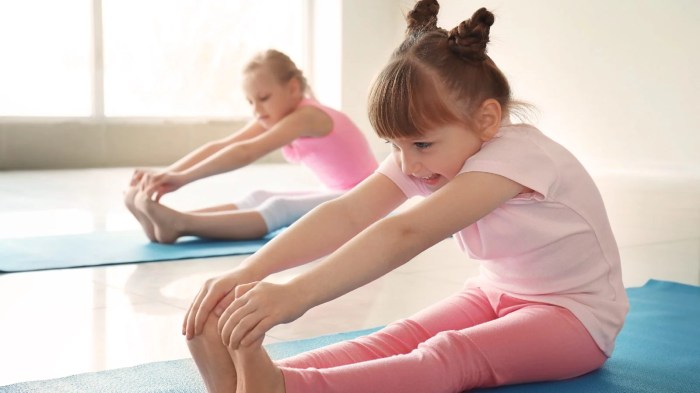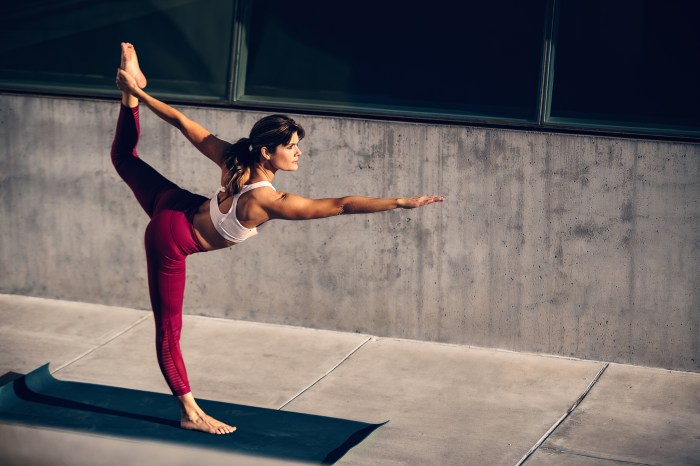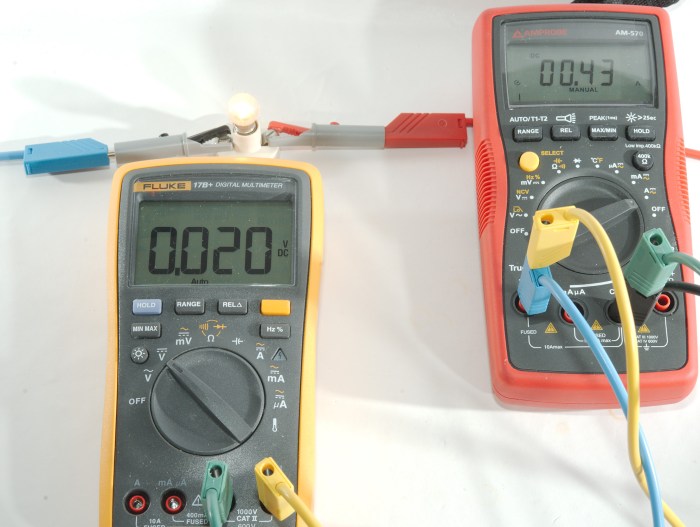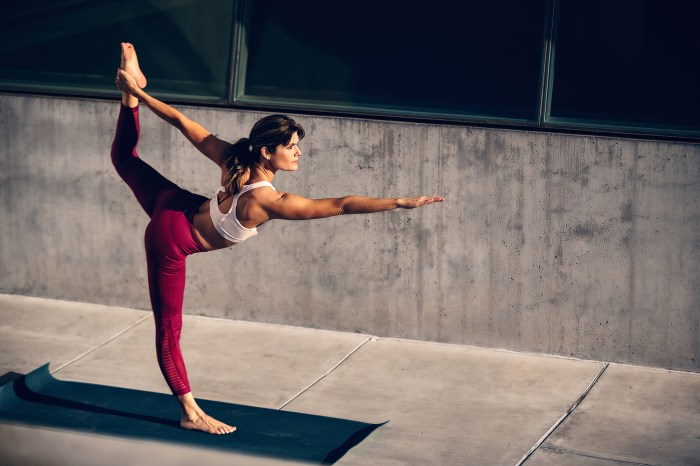Yoga for beginners hitting the mats with confidence is your key to unlocking a mindful and fulfilling practice. This guide will demystify yoga, providing a welcoming space for newcomers to explore the physical and mental benefits. We’ll cover everything from setting up your home practice space to mastering fundamental poses, breathing techniques, and building the confidence to embrace your yoga journey.
Discover how to navigate common challenges and build consistency, creating a practice that supports your well-being and empowers you to confidently step onto your mat.
Introduction to Yoga for Beginners
Yoga, a practice originating in ancient India, is more than just physical postures. It’s a holistic system encompassing physical postures (asanas), breathing techniques (pranayama), and meditation. For beginners, yoga offers a gentle introduction to a path of self-discovery and well-being, fostering a connection between mind, body, and spirit. It’s a journey of self-improvement, not a race to perfection.Yoga’s core principles focus on cultivating inner peace and harmony.
These principles, while deeply rooted in tradition, are accessible and adaptable for everyone, regardless of their background or physical limitations. The philosophy emphasizes mindfulness, acceptance, and the interconnectedness of all things. This creates a supportive and non-judgmental environment conducive to personal growth.
Defining Yoga for Beginners
Yoga, in its essence, is a practice designed to promote physical and mental well-being. It’s a union of body, mind, and spirit, achieved through the interconnected practice of postures, breathwork, and meditation. This holistic approach fosters a deeper understanding of oneself and the world around us.
Core Principles of Yoga (Beginner-Friendly)
Yoga’s core principles provide a framework for a beginner’s journey. These guiding principles promote a mindful approach, fostering a sense of self-awareness and inner peace. Emphasis on ethical conduct (Yama) and self-discipline (Niyama) creates a supportive foundation for personal growth. Acceptance of one’s current state and a commitment to consistent practice are key to building a positive and enriching experience.
Common Misconceptions About Yoga
Many misconceptions surround yoga, often deterring beginners. A common misconception is that yoga is solely about flexibility. While flexibility is a benefit, yoga encompasses strength, balance, and mindfulness. Another common misconception is that yoga is a competitive pursuit. Yoga’s focus is on self-discovery and personal growth, not comparisons with others.
Understanding that yoga is a journey, not a destination, is crucial for beginners to embrace the process with open hearts.
Stepping onto your yoga mat for the first time can feel intimidating, but building confidence is key for beginners. Learning to embrace the journey and focus on your own practice is crucial. Just like understanding the nuances of Italian culture, there are certain aspects of yoga that you’ll quickly pick up on, such as you grew Italian you will understand these 10 things.
By understanding these key principles, you’ll find yourself more comfortable and confident as you progress on your yoga journey. Ultimately, consistency and a positive mindset are the best tools for beginners hitting the mats with confidence.
Physical and Mental Benefits for Beginners
Yoga offers a wide array of physical and mental benefits, even for beginners. Physically, yoga enhances flexibility, strength, and balance. Mentally, it cultivates mindfulness, stress reduction, and improved focus. These benefits contribute to overall well-being and empower individuals to navigate life’s challenges with greater resilience. The gentle nature of many beginner-friendly practices makes it accessible to those with physical limitations.
Different Types of Yoga for Beginners
Yoga encompasses a variety of styles, catering to different needs and preferences. This table Artikels some types suitable for beginners, highlighting their benefits and styles:
| Type of Yoga | Benefits | Style |
|---|---|---|
| Hatha Yoga | Gentle postures, focus on alignment and breath, excellent for beginners | Slow-paced, emphasis on proper alignment |
| Vinyasa Yoga | Flowing sequences connecting postures with breath, builds strength and flexibility | Dynamic, energetic flow |
| Yin Yoga | Deep stretches, promoting flexibility and relaxation, focusing on holding postures for longer periods | Passive, focused on holding stretches |
| Restorative Yoga | Relaxing postures held with props, promotes deep relaxation and stress relief | Supported, using props to facilitate relaxation |
Setting Up Your Yoga Practice Space

Embarking on your yoga journey begins with creating a dedicated and inviting space. This sanctuary, whether in your living room or a corner of your bedroom, should be a place of peace and tranquility where you can connect with your body and mind. A thoughtfully prepared environment sets the stage for a more profound and enjoyable practice.A well-structured space promotes focus and helps you transition into a mindful state of being.
It is an investment in your overall well-being, creating a routine that fosters a positive association with your practice.
Stepping onto your yoga mat for the first time can feel daunting, but don’t worry! Building confidence as a beginner is all about finding your rhythm and focusing on your breath. Plus, if you’re expecting, you might be surprised at some of the unexpected perks of pregnancy, like the increased flexibility and body awareness that can actually make yoga easier.
Check out this list of 10 perks being pregnant that are unexpected to see what I mean 10 perks being pregnant that are unexpected. Embrace the journey, listen to your body, and soon you’ll be hitting those poses with newfound ease and grace.
Essential Equipment for Beginners
A few essential items can enhance your yoga practice and make it more comfortable and accessible. For beginners, a yoga mat, blocks, and straps are highly recommended. These props provide support and stability, allowing you to focus on the postures without physical limitations.
- Yoga Mats: A non-slip yoga mat provides cushioning for your joints and helps prevent slipping during poses. Choose a mat that feels comfortable under your hands and feet, considering factors like thickness and material. Different mats offer varying levels of cushioning and support, with some made from natural materials like jute or cork for a more eco-friendly option.
- Yoga Blocks: Yoga blocks are versatile tools for support and modifications. They can elevate your hands, hips, or feet to adjust poses for better alignment and comfort. This is particularly useful for beginners as they learn to find correct alignment. Blocks also provide stability during transitions between poses.
- Yoga Straps: Yoga straps are useful for assisting with poses that require greater flexibility or range of motion. They provide support for reaching your limbs further or maintaining a posture, allowing you to focus on proper form and alignment. Straps are particularly helpful for lengthening muscles and improving flexibility over time.
Creating a Comfortable and Safe Yoga Space
Your yoga space should be a comfortable and safe haven, free from distractions. Natural light, soft music, and a clutter-free environment are all important factors. Choose a spot where you won’t be interrupted, and consider incorporating elements that promote relaxation, such as calming colors and soothing scents.
- Location: Select a space that’s free from clutter and interruptions. Ideally, the space should be large enough to accommodate your movements without hitting walls or furniture. If possible, a dedicated space is ideal, but a corner or area of a room can work just as well.
- Lighting: Soft, diffused lighting helps create a calm and serene atmosphere. Natural light is preferable, but if necessary, use soft lamps to illuminate the area. Avoid harsh, direct lighting that could cause glare or discomfort.
- Temperature: Maintain a comfortable temperature that allows for a pleasant practice. Adjust the temperature to avoid feeling too hot or too cold during your session.
Maintaining a Clean and Organized Space
A clean and organized space is conducive to a mindful practice. Keeping your yoga equipment in a designated area and regularly cleaning your mat will help maintain hygiene and ensure a safe practice.
- Mat Cleaning: Regularly clean your yoga mat to maintain hygiene and prevent the buildup of bacteria. Use a damp cloth or a specialized mat cleaner to wipe down the surface after each use. Some mats have specific cleaning instructions that should be followed.
- Equipment Storage: Store your yoga props in a designated area, such as a cupboard or shelf. This will keep your space organized and make it easier to find your equipment when you need it.
- Decluttering: A clutter-free environment promotes focus and a sense of calm. Remove unnecessary items from the yoga area to create a more serene space.
Using Yoga Props in Simple Poses
Yoga props can significantly aid in achieving proper alignment and comfort in poses. Using these props can make yoga more accessible and enjoyable for beginners.  A yoga mat provides a non-slip surface, allowing for better stability and balance during poses.
A yoga mat provides a non-slip surface, allowing for better stability and balance during poses. Yoga blocks can elevate your hands or feet to modify poses. For example, in Downward-Facing Dog, blocks under your hands can make the pose more accessible for those with tight shoulders.
Yoga blocks can elevate your hands or feet to modify poses. For example, in Downward-Facing Dog, blocks under your hands can make the pose more accessible for those with tight shoulders. Yoga straps can assist with poses that require reaching or lengthening your limbs. For example, in a standing forward fold, a strap around your feet can help you lengthen your spine and deepen the stretch in your hamstrings.
Yoga straps can assist with poses that require reaching or lengthening your limbs. For example, in a standing forward fold, a strap around your feet can help you lengthen your spine and deepen the stretch in your hamstrings.
Yoga Props, Benefits, and Usage
| Yoga Prop | Benefits | How to Use |
|---|---|---|
| Yoga Mat | Provides cushioning, stability, and non-slip surface | Place mat on the floor before starting your practice. |
| Yoga Blocks | Elevates hands or feet, adjusts poses for comfort and alignment | Place blocks under hands, feet, or hips as needed. |
| Yoga Straps | Assists with reaching, lengthening, and maintaining poses | Wrap strap around hands, feet, or limbs to support or deepen the stretch. |
Fundamental Yoga Poses for Beginners
Embarking on your yoga journey requires mastering fundamental poses. These foundational postures build strength, flexibility, and awareness, setting the stage for more advanced practices. Learning proper alignment and modifications is crucial for safety and effectiveness. Understanding your body’s limitations and honoring its signals will help you progress safely and avoid injuries.Fundamental poses form the building blocks of a yoga practice.
Each posture has unique benefits, promoting physical well-being and mental clarity. By mastering these initial steps, you can confidently explore the world of yoga and unlock its transformative potential.
Essential Poses for Beginners
A strong foundation in basic poses is essential for safe and effective practice. This section introduces several key poses, outlining their alignment and modifications. Remember, consistency and mindful practice are key to seeing progress.
- Mountain Pose (Tadasana): Standing tall, feet together or hip-width apart, ground down through all four corners of your feet. Lengthen your spine, relax your shoulders, and gently draw your navel towards your spine. This pose cultivates stability, awareness, and grounding. Modifications for beginners include keeping the feet wider apart for better balance, or placing a block under the hands for support during the posture.
Feeling a little intimidated stepping onto your yoga mat for the first time? Don’t worry, you’re not alone! It’s all about building confidence and finding your flow. Learning how to navigate the world of yoga, whether you’re a total newbie or just looking to deepen your practice, is key. Understanding how you can influence the industry you’re in, how influence the industry youre , is equally important.
Ultimately, finding your inner peace and grace on the mat is a journey, not a race. So, embrace the process, breathe deeply, and enjoy the journey!
- Downward-Facing Dog (Adho Mukha Svanasana): Start on your hands and knees. Tuck your toes under, lift your hips up and back, forming an inverted V-shape with your body. Keep your hands shoulder-width apart, arms straight, and heels pressing towards the floor (as much as possible). This pose stretches the entire body, improving circulation and building strength. Modifications include bending your knees to accommodate flexibility limitations.
Place blocks under your hands if your wrists are sensitive.
- Child’s Pose (Balasana): Kneel on the floor with your big toes touching. Sit back on your heels, and fold forward, resting your forehead on the mat. Extend your arms out in front of you or alongside your body. This restorative pose gently stretches the hips, thighs, and ankles. Modifications include placing a bolster or blanket under your hips for added comfort, and supporting your forehead on a pillow.
- Warrior II (Virabhadrasana II): Step your feet wide apart, turning your right foot out 90 degrees and your left foot slightly inward. Bend your right knee over your ankle, keeping your knee aligned with your ankle. Extend your arms parallel to the floor, palms facing down. This pose strengthens the legs, improves balance, and opens the chest. Modifications include shortening the stance to improve balance, and placing blocks under your hands if you’re unable to extend your arms fully.
- Forward Fold (Uttanasana): Standing with feet hip-width apart, inhale and lengthen your spine. Exhale and hinge forward from your hips, keeping your back straight. Allow your hands to reach towards the floor or grab onto opposite elbows. This pose stretches the hamstrings, calves, and lower back. Modifications include bending your knees to relieve tension in the hamstrings, or using a block to support your hands if you can’t reach the floor.
- Cobra Pose (Bhujangasana): Lie on your stomach with your hands underneath your shoulders. Press into your hands, lifting your chest off the floor, keeping your shoulders relaxed and away from your ears. This pose gently strengthens the back muscles and improves posture. Modifications include keeping your elbows bent if your back is not flexible enough to straighten. Using a pillow or bolster under your stomach or chest can support the back.
Safe Modifications for Injuries or Limitations
Listening to your body is paramount. Don’t push yourself beyond your limits. Modifications are essential to make yoga accessible to everyone.
| Pose Name | Description | Benefits | Modifications |
|---|---|---|---|
| Mountain Pose | Standing tall, grounding through feet | Stability, awareness | Wider stance, block under hands |
| Downward-Facing Dog | Inverted V-shape, stretching entire body | Stretching, strength | Bent knees, blocks under hands |
| Child’s Pose | Restorative, stretching hips, thighs | Relaxation, stretching | Bolster or blanket under hips, pillow under forehead |
| Warrior II | Sideways leg extension, arm stretch | Leg strength, balance, chest opening | Shorter stance, blocks under hands |
| Forward Fold | Hinge forward from hips, stretching hamstrings | Hamstring, calf, lower back stretch | Bent knees, block under hands |
| Cobra Pose | Chest lift, back strengthening | Back strengthening, posture improvement | Bent elbows, pillow or bolster under stomach/chest |
Building Confidence and Consistency
Embarking on a yoga journey can be incredibly rewarding, but navigating the initial stages can sometimes feel daunting. Building confidence and establishing a consistent practice are crucial for long-term success. This section explores common anxieties and provides practical strategies to overcome them, empowering you to hit the mat with confidence and enthusiasm.Many beginners experience a mix of anxieties, including fear of not being flexible enough, feeling self-conscious about their body, or worrying about not being able to keep up with others.
These anxieties are perfectly normal and can be effectively addressed with a positive mindset and practical strategies.
Common Anxieties of Beginners
Beginners often face self-doubt and apprehension when starting a yoga practice. The fear of not being flexible enough, or not being able to execute poses correctly, can be quite common. A lack of prior experience can also lead to feelings of inadequacy and self-consciousness, especially in a group setting. These concerns are perfectly normal and should be acknowledged rather than dismissed.
Practical Strategies for Building Confidence
Developing confidence in your yoga practice involves acknowledging your progress and celebrating small victories. Focus on your personal journey rather than comparing yourself to others. Remember that yoga is a process, not a destination. Each practice session presents an opportunity for growth and improvement.Start by setting realistic goals. Don’t aim for perfection from the outset.
Focus on the present moment and the sensations in your body. Embrace the journey, and appreciate the progress you’re making, no matter how small it may seem. Celebrate your achievements, both big and small. This positive reinforcement will boost your confidence significantly.
Tips for Staying Motivated and Consistent
Consistency is key to experiencing the full benefits of yoga. Establishing a regular practice routine can be challenging, but setting realistic expectations and incorporating yoga into your daily life will help you maintain motivation.Create a supportive environment by practicing with a friend, joining a yoga class, or finding online resources and communities. These supportive networks can provide encouragement and accountability.
Consider incorporating yoga into your daily schedule, like stretching before work or during your lunch break. Visualize your success, envision yourself progressing, and appreciate the benefits of your practice.
Inspirational Quotes and Stories
“The journey of a thousand miles begins with a single step.”
Lao Tzu
Numerous stories exist about individuals who overcame initial anxieties and achieved remarkable results through consistent effort and dedication. These narratives demonstrate the power of perseverance and resilience in the face of challenges. Find inspiration in stories of others who have overcome similar obstacles. Allow these narratives to fuel your determination and motivate you to keep moving forward.
Beginner’s Weekly Yoga Practice Schedule
| Day | Activity |
|---|---|
| Monday | Gentle flow focusing on warm-up and basic poses (30 minutes) |
| Tuesday | Restorative yoga (30 minutes) |
| Wednesday | Intermediate poses and breathing exercises (45 minutes) |
| Thursday | Restorative yoga (30 minutes) |
| Friday | Gentle flow focusing on warm-up and basic poses (30 minutes) |
| Saturday | Advanced poses and meditation (60 minutes) |
| Sunday | Rest day or light stretching (15 minutes) |
This schedule is a suggestion and can be adapted to suit your individual needs and preferences. Adjust the duration and type of practice to fit your available time and energy levels. Remember to listen to your body and prioritize rest and recovery.
Breathing Techniques for Beginners
Breathing is the cornerstone of yoga. It’s not just about inhaling and exhaling; it’s about connecting your breath to your movements, creating a harmonious flow that deepens your practice and promotes physical and mental well-being. Understanding and mastering various breathing techniques is crucial for a safe and effective yoga journey.Proper breathing in yoga enhances the efficiency of your body’s systems.
It facilitates better oxygenation of muscles, reducing the risk of strain or injury. It also calms the mind, reducing stress and anxiety, allowing you to focus better on the present moment. This improved mental clarity enhances the overall benefits of your yoga practice.
Fundamental Breathing Techniques
Breathing techniques, or pranayama, are integral to yoga. They help to regulate the breath, which in turn, influences the mind and body. By practicing these techniques, you can experience a more profound and enriching yoga practice.
Diaphragmatic Breathing (Belly Breathing)
Diaphragmatic breathing, often called belly breathing, is a fundamental technique for beginners. It involves engaging your diaphragm, the muscle separating your lungs from your abdomen. This method helps to slow your breathing and promote relaxation.
- Step 1: Sit comfortably with a straight spine. You can also lie down on your back. Place one hand on your chest and the other on your belly.
- Step 2: Inhale slowly and deeply through your nose, feeling your belly rise as your diaphragm expands. Your chest should remain relatively still.
- Step 3: Exhale slowly and completely through your mouth, feeling your belly fall as your diaphragm relaxes. Again, keep your chest relatively still.
- Step 4: Repeat this process for several minutes, focusing on the smooth, controlled flow of your breath.
Alternate Nostril Breathing (Nadi Shodhana)
Alternate nostril breathing is a powerful technique for balancing the energies in the body. It involves gently directing the breath through each nostril alternately.
- Step 1: Sit comfortably with a straight spine. Place your right hand on your right knee and your left hand on your left knee. Rest your right hand on your right nostril, lightly closing it.
- Step 2: Inhale through your left nostril. Hold for a moment.
- Step 3: Gently close your left nostril and exhale through your right nostril. Hold for a moment.
- Step 4: Inhale through your right nostril. Hold for a moment.
- Step 5: Gently close your right nostril and exhale through your left nostril. This completes one cycle.
- Step 6: Continue alternating in this manner for several minutes, maintaining a slow, controlled rhythm.
Ujjayi Breath (Victorious Breath)
Ujjayi breath creates a subtle, internal sound. It is used to regulate energy and focus.
- Step 1: Sit comfortably with a straight spine. Gently constrict the back of your throat as if you’re trying to whisper.
- Step 2: Inhale and exhale through your nose, maintaining this soft, audible sound. The sound should be subtle, almost like the sound of ocean waves.
- Step 3: Feel the warmth of the breath in your body.
- Step 4: Continue practicing this technique for several minutes.
Relationship Between Breath and Movement, Yoga for beginners hitting the mats with confidence
The breath is the conductor of your yoga practice. It connects your poses and creates a flowing sequence. Proper breathing during poses helps to maintain stability, improve balance, and prevent injury. For example, in a forward bend, a controlled inhale can help you lengthen the spine, while a smooth exhale can deepen the stretch.
Comparing Breathing Techniques
| Breathing Technique | Description | Benefits |
|---|---|---|
| Diaphragmatic Breathing | Focusing on belly expansion | Relaxation, stress reduction, improved posture |
| Alternate Nostril Breathing | Alternating inhalation and exhalation through nostrils | Energy balance, focus enhancement, improved concentration |
| Ujjayi Breath | Creating a soft internal sound | Calming effect, increased awareness, improved focus |
Navigating Common Challenges
Embarking on a yoga journey can be incredibly rewarding, but it’s essential to be prepared for potential hurdles. Understanding common challenges and how to address them safely is key to maintaining motivation and preventing setbacks. This section will equip you with strategies to overcome obstacles and continue your practice with confidence.
Identifying Common Challenges
Beginners often face difficulties related to physical limitations. Pain, inflexibility, and a lack of balance are frequent concerns. Addressing these challenges head-on is crucial for a safe and effective practice. Consistency and patience are vital, and it’s important to remember that progress takes time.
Addressing Pain and Discomfort
Listen to your body! Pain is a crucial signal that something isn’t right. If you experience discomfort during a pose, gently modify the position or come out of the pose entirely. Avoid pushing through pain, as this can lead to injury. Start with poses that are within your current range of motion. Gradually increase the intensity and duration of your practice as your body adapts.
Overcoming Inflexibility
Lack of flexibility is a common concern for beginners. Yoga is not about achieving extreme flexibility immediately. It’s about cultivating a gentle and consistent approach to stretching. Focus on holding poses for shorter durations initially, gradually increasing the time as your body becomes more flexible. Incorporate gentle stretches and warm-up routines into your daily routine to enhance flexibility.
Consistent practice is key. Stretching regularly, even outside of your yoga sessions, will help you improve your range of motion.
Managing Injuries or Discomfort
If you experience an injury or persistent discomfort, stop the activity immediately. Consult with a healthcare professional or a qualified yoga instructor to determine the cause and appropriate course of action. They can guide you on safe modifications or alternative practices. Seeking professional advice is crucial for preventing further complications and ensuring a safe return to practice.
Seeking Professional Guidance
Don’t hesitate to seek guidance from a qualified yoga instructor. They can tailor a practice to your specific needs and abilities, ensuring you develop a safe and effective routine. A certified instructor can provide valuable insights into proper alignment, modifications, and potential risks. They can also help you understand the nuances of breathing techniques and postures.
Important Advice from Experienced Practitioners
“Yoga is not about forcing your body into a shape, but about listening to its needs and respecting its limitations. Patience and consistency are key.”
A renowned yoga teacher
Exploring the Journey Beyond Beginners

Embarking on a yoga journey is a rewarding experience, and the path extends far beyond the foundational poses and breathing techniques. Transitioning from beginner to intermediate involves a deeper understanding of the practice, allowing you to explore its transformative potential with greater ease and awareness. This exploration goes beyond simply mastering more challenging postures; it’s about connecting with your body, mind, and breath in a more profound way.Moving beyond the introductory stages involves a shift in focus from acquiring basic knowledge to refining your understanding and deepening your connection with the practice.
This progression is characterized by a gradual increase in physical and mental challenges, allowing you to unlock new levels of awareness and personal growth.
Progression to Intermediate Levels
To progress from beginner to intermediate, focus on building strength, flexibility, and balance. Gradually increasing the intensity of your practice, incorporating more challenging poses, and paying close attention to proper alignment are crucial. Consistent practice, coupled with mindful awareness of your body’s limits, is key. As you become more comfortable with fundamental poses, explore variations and transitions to further refine your understanding and build upon your existing skills.
Key Aspects for Progression
Developing a deeper understanding of alignment and anatomical awareness is critical. Pay attention to the subtle nuances in each pose, ensuring you are engaging the correct muscles and avoiding unnecessary strain. Experiment with different props like blocks, straps, and blankets to support your body and enhance your practice. Focusing on your breath and cultivating a mindful approach to each pose are vital components of the progression.
Cultivating patience and persistence is essential.
Resources for Continued Learning
Numerous resources are available to support your journey. Online platforms offer a wealth of information, including videos demonstrating various poses and techniques. Consider joining a local yoga studio or class to receive personalized guidance from an experienced instructor. Books on yoga philosophy, anatomy, and specific styles can provide valuable insights into the practice’s deeper meanings and applications.
Yoga teachers’ workshops and retreats offer immersive learning opportunities, allowing you to connect with the practice on a deeper level.
Potential Yoga Paths
Yoga offers a diverse range of paths, catering to various interests and goals. Explore different styles like Vinyasa, Hatha, Ashtanga, Yin, and Restorative yoga, each offering unique approaches to physical postures, breathing techniques, and mental focus. Specialized paths like Prenatal yoga, Chair yoga, and Therapeutic yoga cater to specific needs and circumstances.
Yoga Paths and Characteristics
| Yoga Path | Characteristics |
|---|---|
| Vinyasa | A dynamic style, flowing sequences connecting poses through breath. |
| Hatha | A foundational style, emphasizing physical postures, breathing techniques, and relaxation. |
| Ashtanga | A challenging style, emphasizing precise postures, sequences, and breathwork. |
| Yin | A passive style, holding poses for extended periods to target deep connective tissues. |
| Restorative | A relaxing style, utilizing props to support the body in passive poses, promoting deep relaxation. |
| Prenatal | Yoga specifically designed for pregnant women, focusing on postures and breathing techniques that support pregnancy. |
| Chair Yoga | A modified style, suitable for individuals with physical limitations, using chairs to support postures. |
| Therapeutic Yoga | A style tailored to address specific physical and mental health concerns, utilizing yoga poses and techniques to promote healing. |
Closing Notes: Yoga For Beginners Hitting The Mats With Confidence
Embarking on your yoga journey can feel daunting, but with the right guidance and a supportive community, you can discover the transformative power of yoga. This comprehensive guide empowers beginners to confidently explore the world of yoga. Remember to listen to your body, embrace the journey, and celebrate every step you take towards a healthier, more mindful you.







